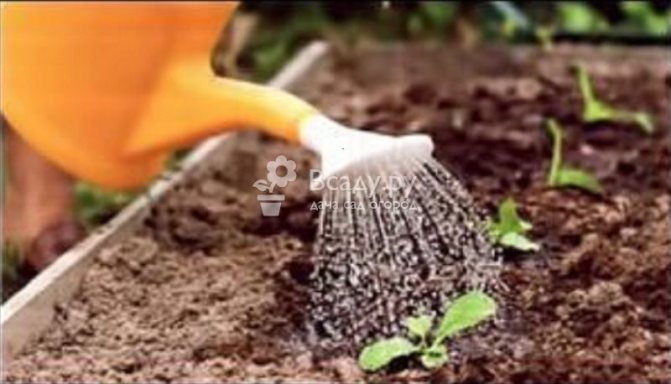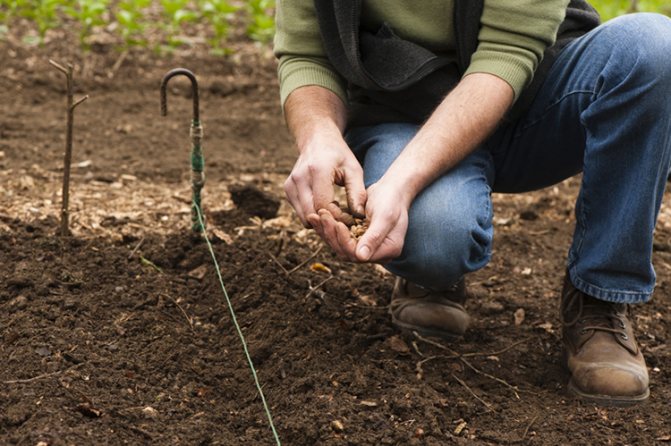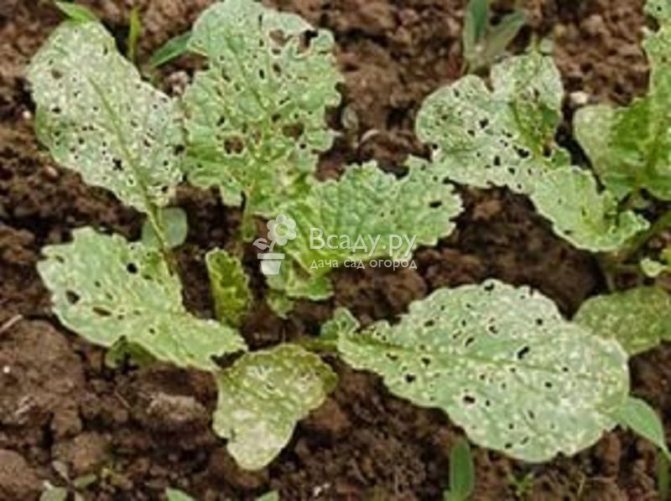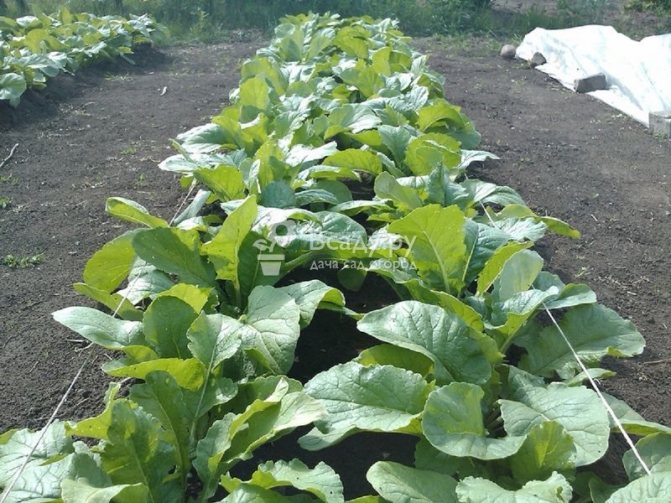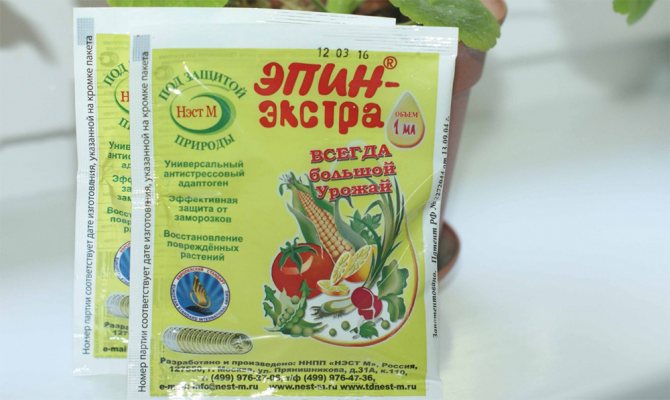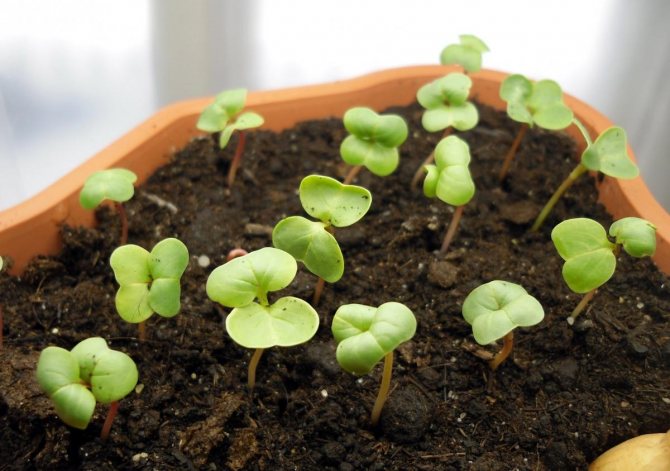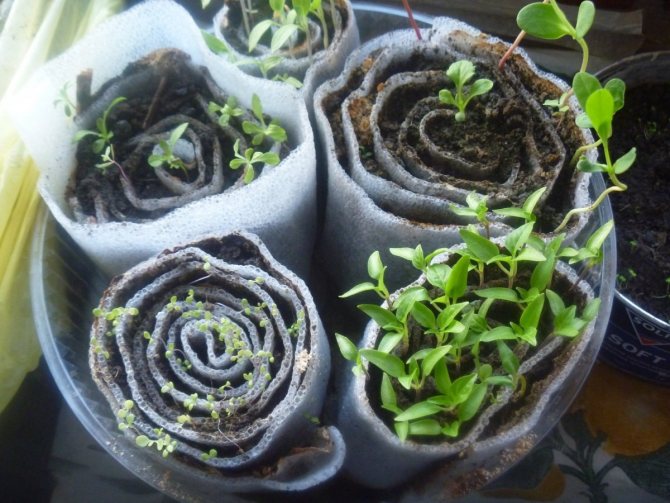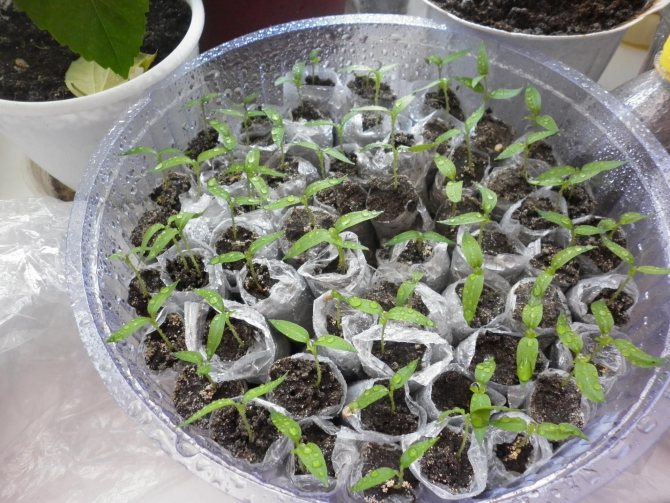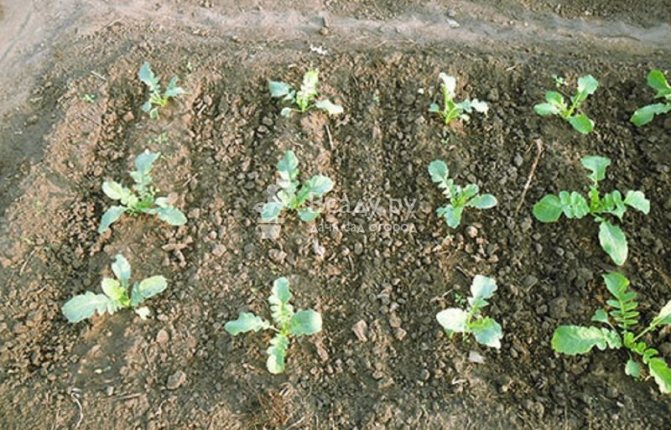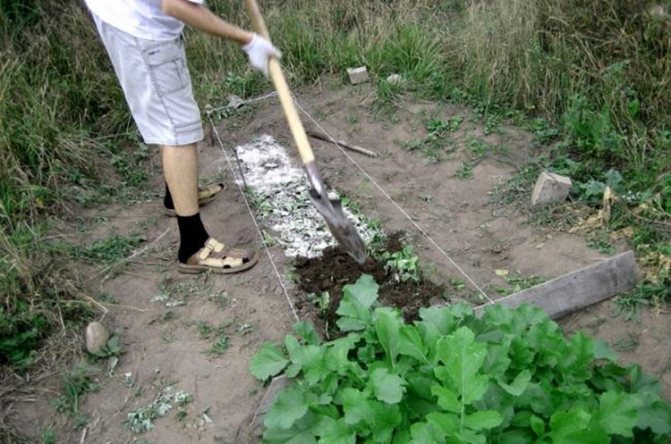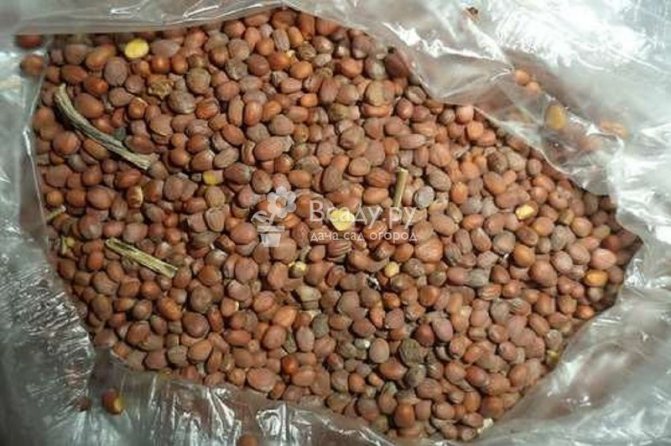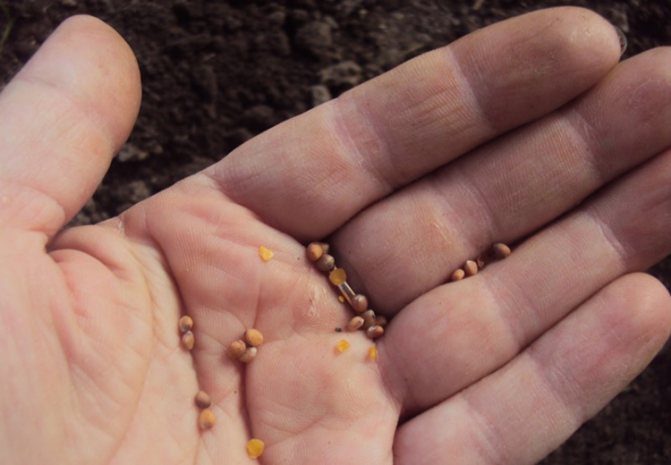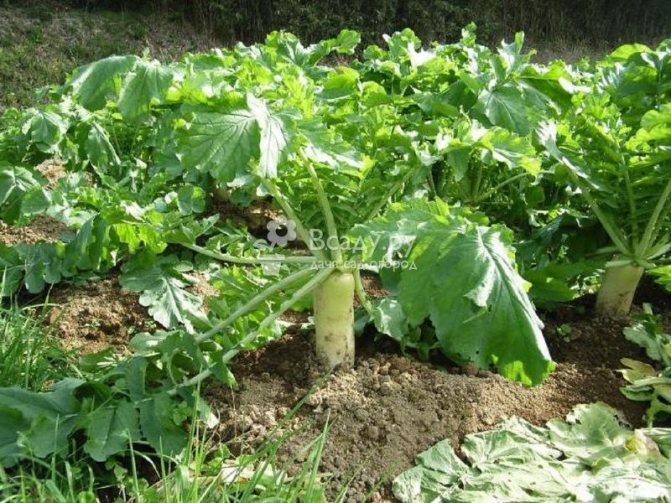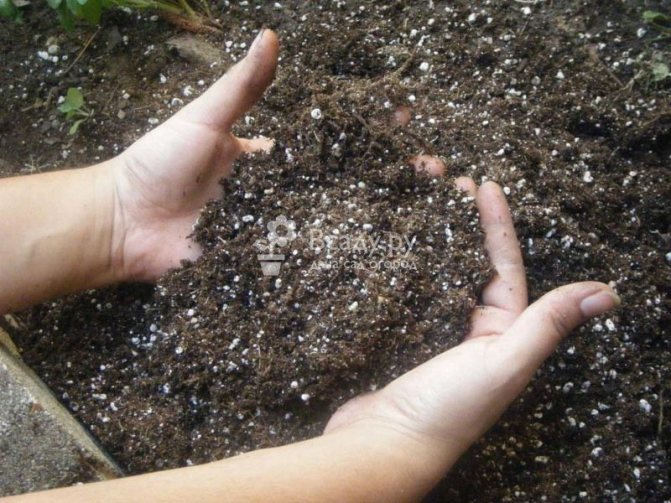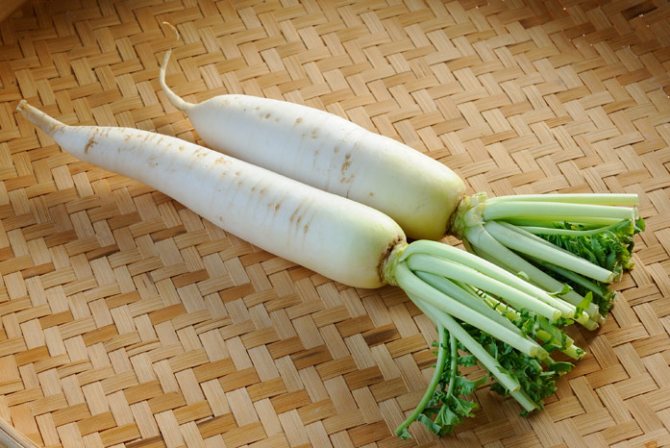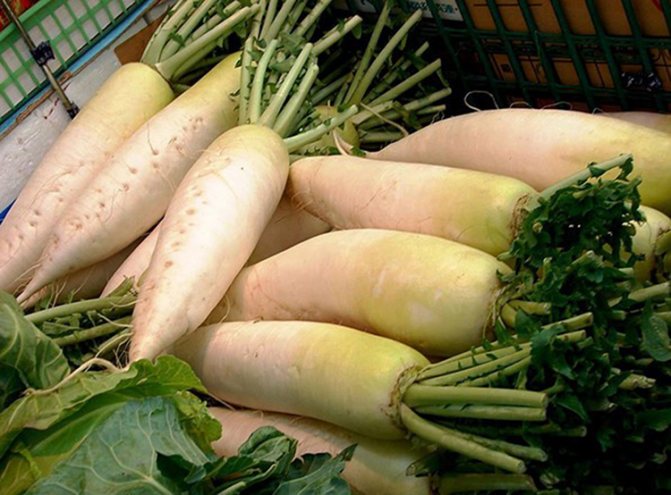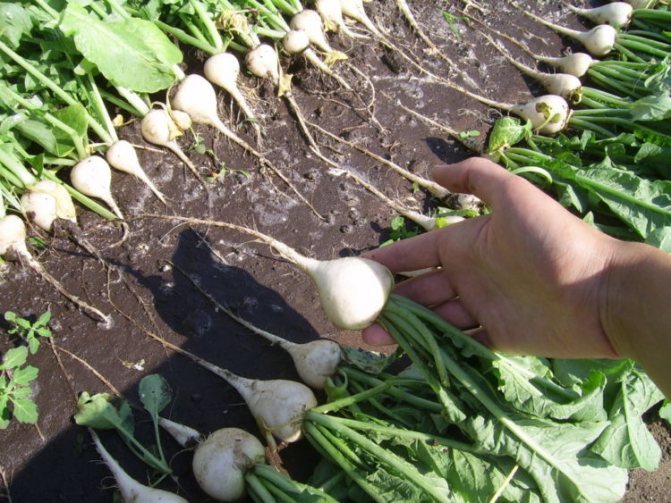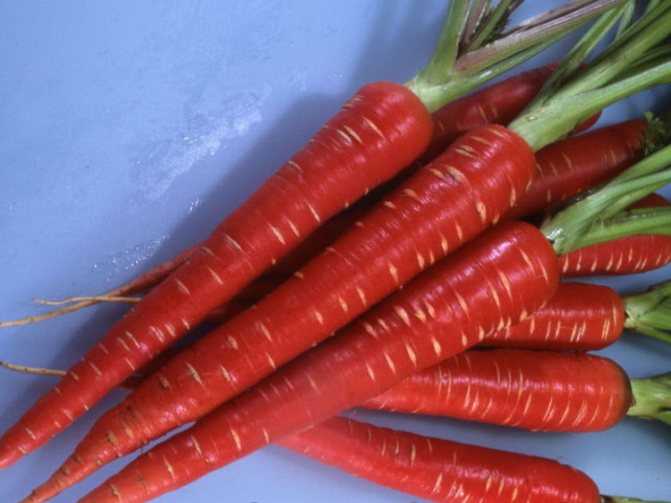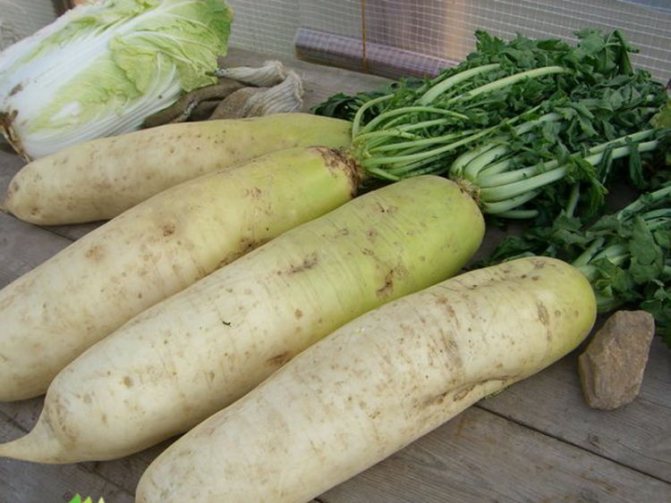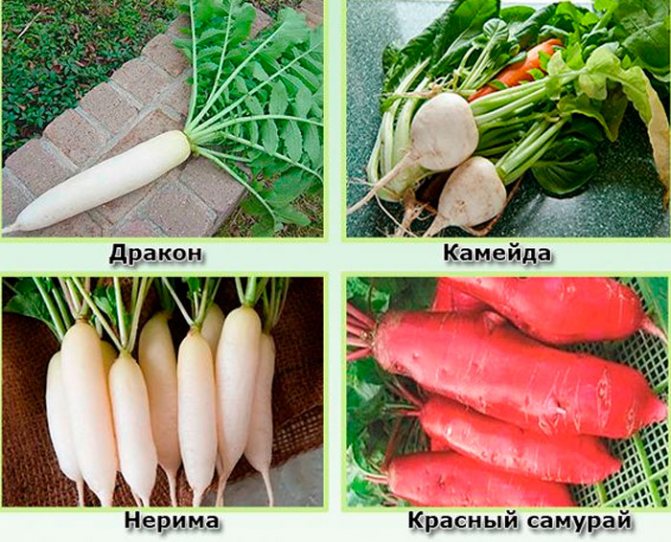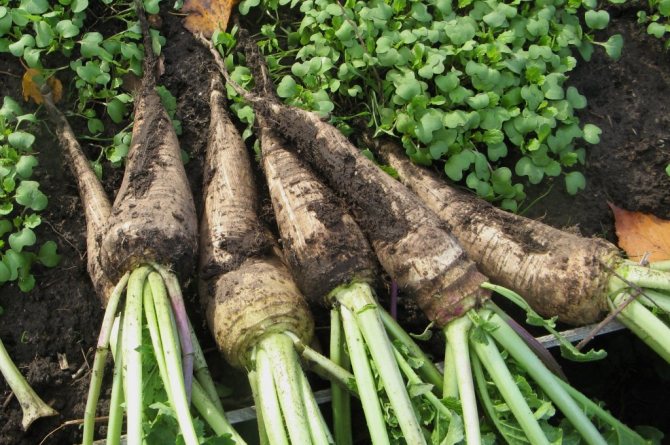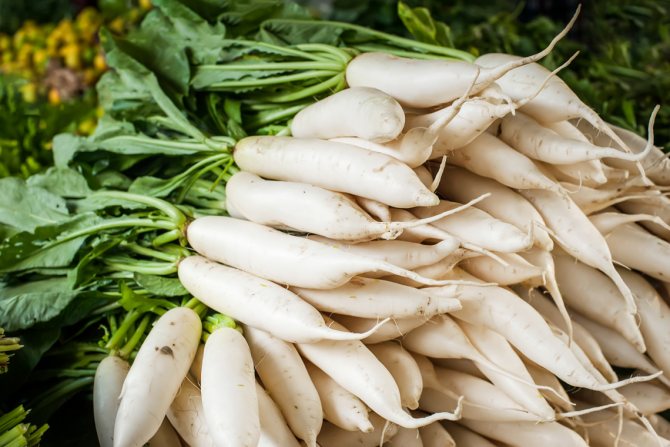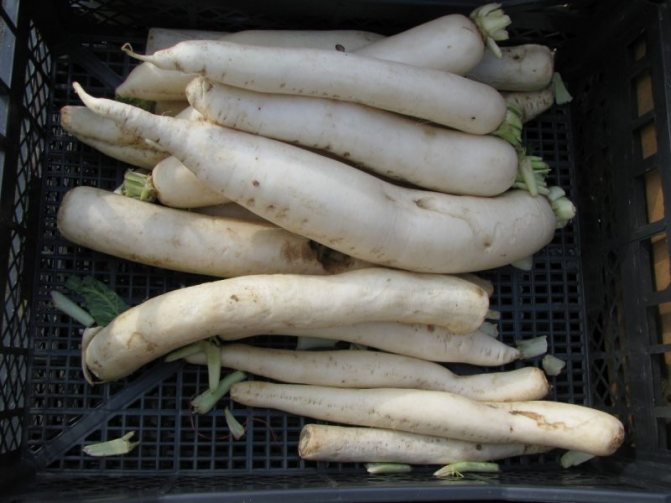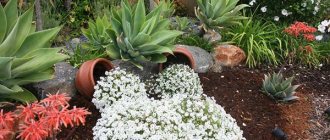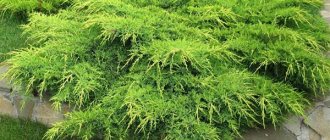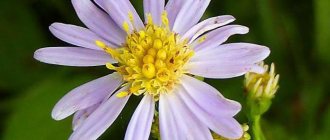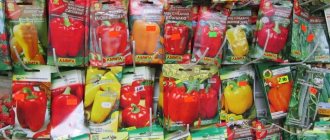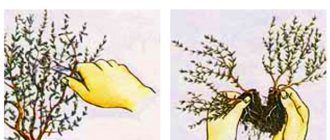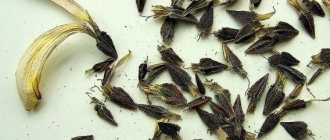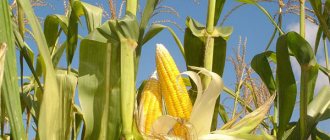Planting and caring for a daikon, planting dates are the nuances that gardeners need to study before starting to grow a vegetable from Southeast Asia. Several domestic firms have been producing and selling seeds of this culture for a long time. Zoned varieties are planted by summer residents of different climatic zones. Daikon has many useful properties and is gradually finding its niche in personal plots.
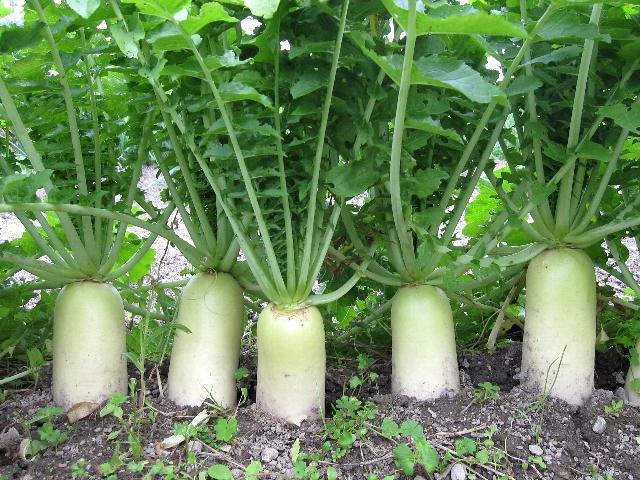
Characteristics of Radish Daikon
Daikon is an annual or biennial root vegetable from the Cruciferous family. Some time after planting, the culture forms a rosette consisting of dissected leaves. The number of leaf plates in the outlet varies from 12 to 40. At the same time, a root crop grows, several times larger than the Radish. Its weight is equal to 600 gr. up to 4 kg, but sometimes there are specimens weighing up to 20 kg. The growing season, depending on the variety, lasts from 40 to 200 days.
We recommend related posts:
Schisandra - planting and care in the open field
Agave - home care
In addition to its impressive size, Daikon has good keeping quality. Its nutritional value deserves special attention: Daikon is a low-calorie product. It was found that in 100 gr. Daikon contains 21 kilocalories and provides 34% of the daily vitamin C requirement.
Conditions for growing daikon
The peculiarity of the daikon is that although this plant is of a short day, it is thermophilic and does not develop at an average daily air temperature below 10 ° C. By choosing the right planting period and providing it with proper care, the daikon can be successfully grown in the Moscow region, in the Urals and in Siberia.
Place on the site
It is important to choose the right place for planting Chinese radish. It is most advisable to plant the daikon as a shift in the late summer after the harvest of the previous early crop has been harvested.
Then plant the Chinese radish?
Good predecessors for daikon:
- legumes - peas, lupine, alfalfa;
- early cucumbers;
- early varieties of onions;
- lettuce and green crops;
- early potatoes.
If the garden plot is large, then it is possible to sow alfalfa to improve the soil and loosen it and leave it on the plot for at least two years. In the middle of the summer of the second year, chop the alfalfa, dig up the roots and sow daikon at the end of summer.
Plants from the cabbage family - early cabbage, radishes or radishes - are not at all suitable as precursors, since they have common diseases and pests, pathogens and larvae of which can accumulate in the soil where these plants were grown.
It is preferable that the daikon bed is located in a sunny, wind-protected place.
Soil requirements
Chinese radish grows successfully on such soils:
- sandy;
- sandy loam;
- lightly loamy chernozem;
- gray forest;
- podzolic;
- chestnut;
- light chestnut and their varieties.
Heavy texture, salinity and the presence of weed sod negatively affect the formation of even root crops with a good internal structure.
It is also necessary to carefully select varieties. So, Miyashige is adapted for growing on clay soils, while Nerime, on the contrary, prefers light, loose soils.
Daikon's requirements for the dietary regime of the soil are low.It is much more important that it be loose, air and water permeable with a neutral or close reaction of the medium.
Fresh or semi-rotten manure, mullein, poultry manure solutions should not be applied under the daikon, as this can lead to root burns, excessive vegetative growth, and the growth of woody cells inside the fruit.
Lighting and temperature
Daikon light requirements:
- Daikon - short day culture, the optimal lighting duration is 10-12 hours.
- The most favorable temperature for active growth processes and the formation of root crops is 18-24 ° C. At higher or lower temperatures, the plants move towards the arrow, strive to form seeds, and the growth of the economically valuable part stops.
- In technical maturity, it can tolerate short-term frosts up to -2 -3o Сwhile in the garden.
- In early spring, seedlings cannot tolerate temperatures below 0oC., therefore, spring crops require planting under a film or covering material.
Growing through seedlings
Sowing seeds for seedlings is carried out in late March - early April. Pre-sowing material undergoes a special treatment: the seeds are immersed for 25 minutes in combustible water (50 °), then transferred to cold water, after which they are put into the refrigerator on a shelf for storing vegetables for a day.
For growing seedlings, it is better to use peat-humus pots or peat tablets. They are convenient in that you can plant seedlings in the ground directly in them. It is recommended to sow 2-3 seeds in one pot. If sowing is carried out in seedling boxes or containers, then their depth should not be less than 10 cm.
Seeds should be sown in a moist, loose substrate. Seeding depth - 20 mm. The container is covered with glass or foil, installed in a warm place.
Daikon pests and diseases
Cruciferous fleas are very dangerous in early spring and early autumn. They seriously destroy the tissues of young leaves up to the death of the culture. And the leaves are often attacked by slugs, cabbage fly, scoop, cabbage bug.
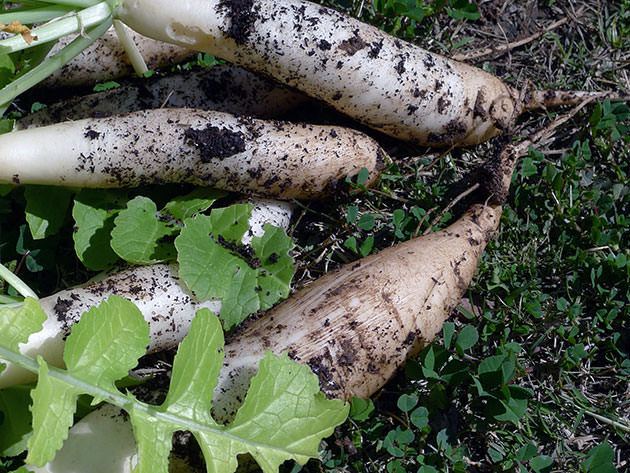

In this case, insecticidal finishes are needed. It is necessary not to forget that leaves for salads from used plantings should not be collected. Of the daikon diseases, mucous bacteriosis and mosaics are affected.
How to care for seedlings?
Under favorable conditions, sprouts appear on the fifth day. Taking care of seedlings is not difficult. The main actions are reduced to timely watering, regular loosening. When two leaves appear on the sprouts, the seedlings are thinned out, and then fed with a weak solution of mineral fertilizers.
The seedlings do not need highlighting, on the contrary, they need a short daylight hours, since the plant needs to grow the root crop. With excessive lighting, the seedlings will quickly begin to stretch upward, they can bloom, which means that you can not wait for root crops.
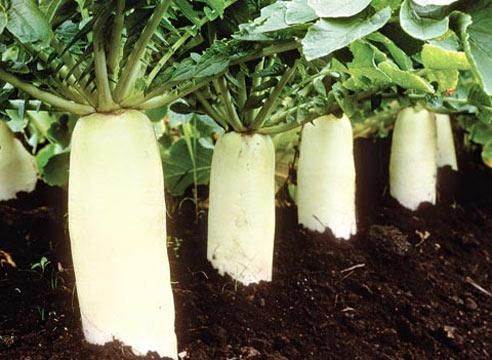

Growing daikon in the ground
Planting Daikon in open ground
Approximately 15-20 days before planting seedlings in open ground, you need to start hardening it - first take it out for a few minutes, gradually increasing the time spent in the fresh air.
Boarding time
Seedlings are planted in open ground after 2 pairs of true leaves are formed in the seedlings. In addition, the climate affects the landing time (the air temperature should not be lower than + 10 ° С), the length of daylight hours. During the growth of seedlings, the formation of root crops in them, the length of daylight hours should not be more than 12-14 hours. With a longer daylight hours, the Daikon bushes will "go into the arrow."
Soil composition
Although Daikon is an unassuming crop in relation to the composition of the soil, growing experience shows that the plant grows better on loamy or sandy loam soils, with deep groundwater. If the acidity of the soil is high, it is recommended to add lime.Optimal soil for growing Daikon with a pH of 6.0-8.0.
Site preparation for planting
The Daikon bed is being prepared in the fall. It is dug to the depth of the shovel bayonet, 20 grams are introduced into the soil. ammonium sulfate and 20 gr. potassium sulfate, 1-2 kg of humus or compost and 40 gr. superphosphate (per 1 square meter of the site). If it is necessary to deacidify the soil, then 15 days before fertilizing, lime is applied to the soil. Organic fertilizers are usually applied under the previous crop, and not before growing the Daikon.
The best predecessors of this crop are cucumbers, beets, potatoes, tomatoes and carrots. It is not recommended to grow Daikon in areas where representatives of the Cruciferous family (turnips, turnips, cabbage and radishes) grew before.
How to land
Seedlings are planted in a garden bed according to the scheme 30x60 cm (row spacing - 60 cm, spacing between bushes - 30 cm). Seedlings are planted in soft, moist soil. When all the seedlings are planted, it is necessary to trample the soil slightly, then cover the surface with a layer of mulch, for example, peat. If there is a threat of recurrent spring frosts, then the seedlings should be covered with plastic wrap at night.
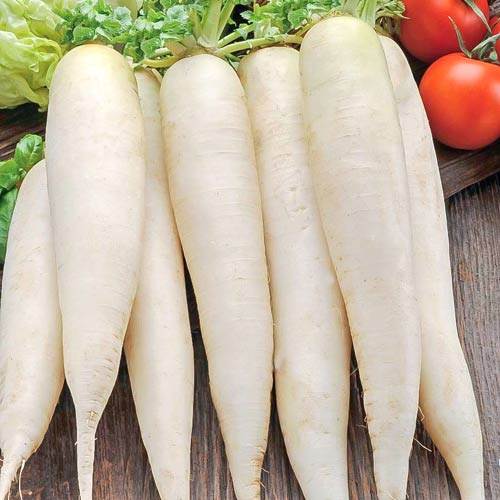

Daikon japanese
Choosing a daikon variety
The plant is classified according to the depth of occurrence, shape and size of the root crop. The main difference between the varieties is the growing season, which lasts from 50 to 90 days. Distinguish between early ripening, mid-ripening, late-ripening varieties.
The following varieties can be distinguished from early ripening:
Rhinoceros
Conical root crop, smooth. The mass reaches 300 g. The pulp is juicy, tender. It is used fresh, the shelf life is short. The growing season is 55-57 days. Productivity 7 kg per sq. m.
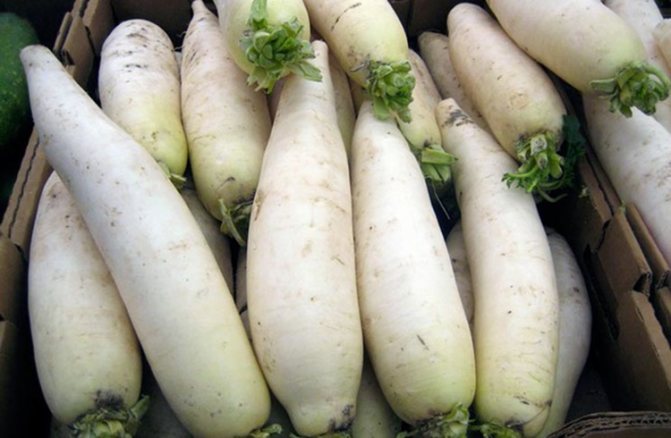

Caesar
Used fresh, stored for up to 20 days. The fruit is white, cylindrical in shape. The mass reaches 1 kg. Productivity - 3-5 kg per 1 sq. m.
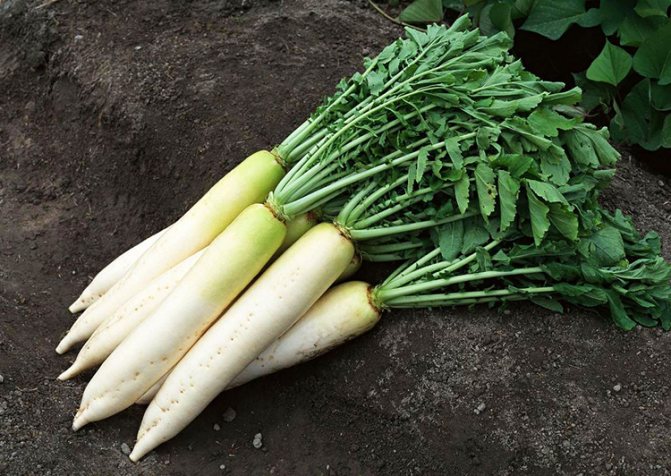

Vakula
The root crop is long, cylindrical with a white skin. The pulp is juicy, dense. The average weight is 600 g. The yield is 7 kg per 1 sq. M. m. excellent taste.
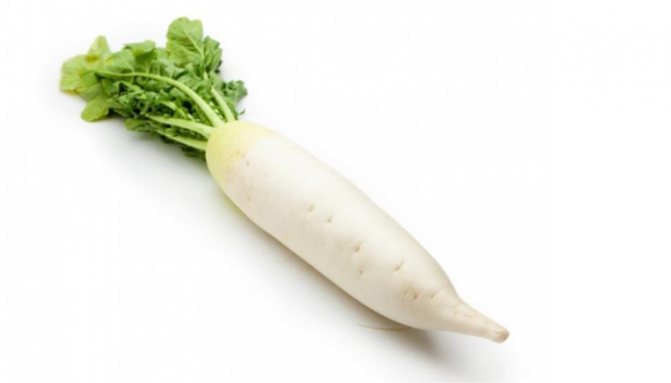

Mid-season varieties include:
Healer
Used fresh. The growing season is 55-60 days. The shape of the root crop is like an icicle. The head is greenish, flat. The peel is smooth white. Excellent taste. Productivity - 7-8 kg per 1 sq. m.
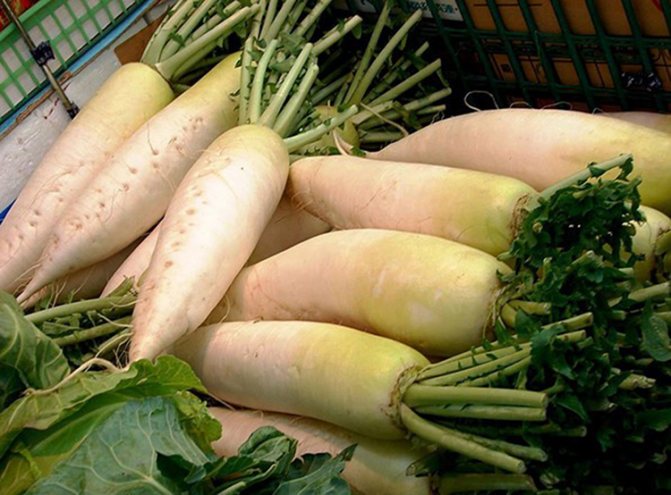

Dubinushka
Fruits are cylindrical in shape with white flesh. A distinctive characteristic is a large mass, reaching 2 kg and a length of up to 0.5 m. It has a pleasant taste, long shelf life. The shape is cylindrical with a pointed base. The pulp is dense and tender. Productivity up to 9.5 kg per 1 sq. m.
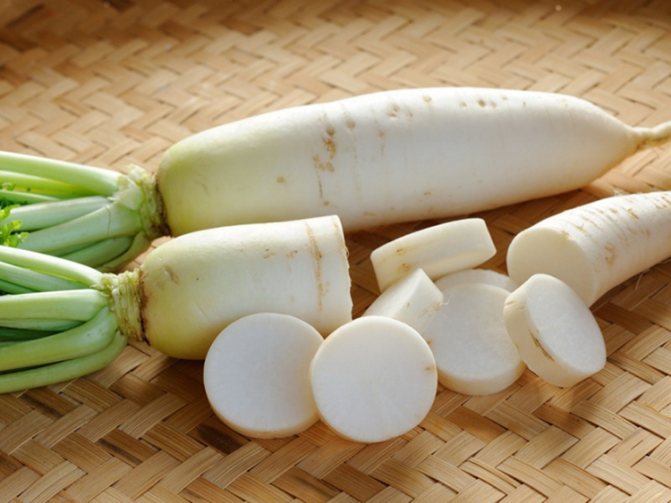

Favorite
The growing season is up to 66 days. Used fresh. Weight reaches 500 g. A conical variety with white tender pulp. Excellent taste, yield up to 6 kg per 1 sq. m, resistant to the formation of arrows.
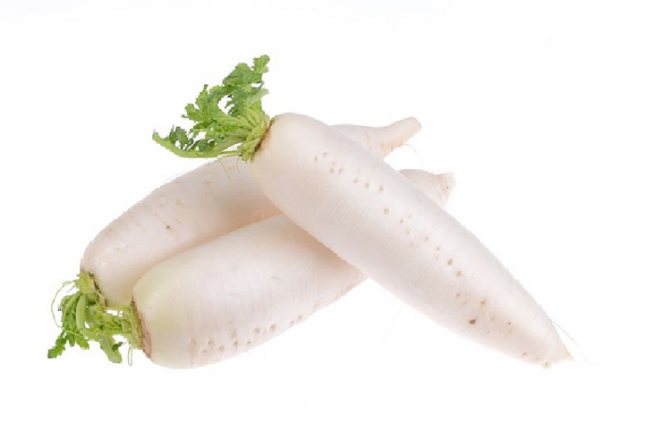

Knight
Short storage, growing season 65–70 days. The root crop is long, with a rough surface, weighing up to 750 g. The pulp is white, juicy. Good taste. Productivity up to 7 kg per 1 sq. m.
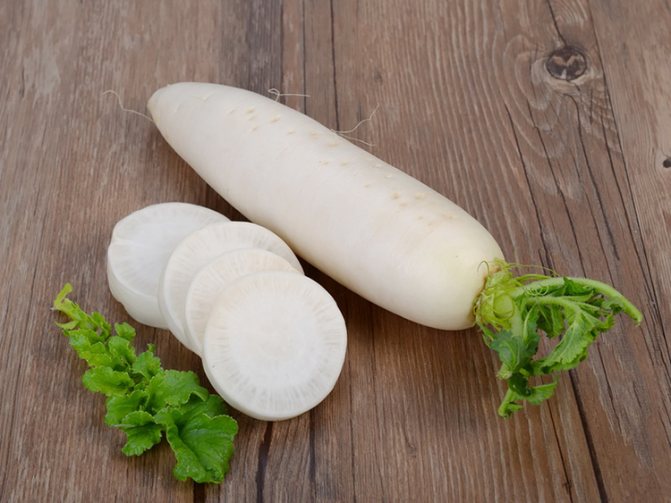

Representatives of late-ripening varieties are:
Mammoth tusk
White cylindrical shape with a rough surface. Excellent taste, weight reaches 800 g. Productivity up to 6 kg per 1 sq. M. m.
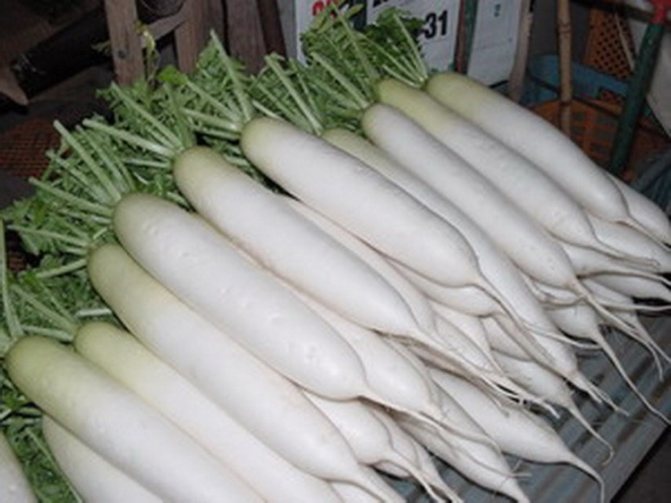

Japanese long
The variety is suitable for long-term storage. Weight 3 kg with a length of up to 65 cm. The pulp is white, juicy with a spicy taste.
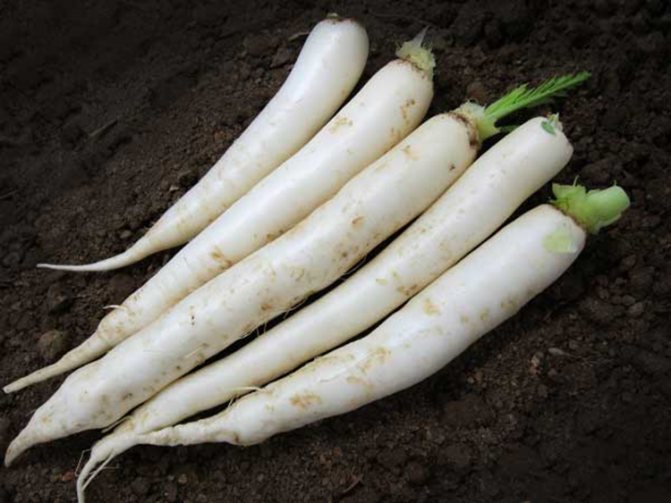

Moscow hero
The growing season is up to 85 days. Recommended for fresh consumption. Cylindrical root crop. High yield, excellent taste. The mass reaches 1.5 kg.
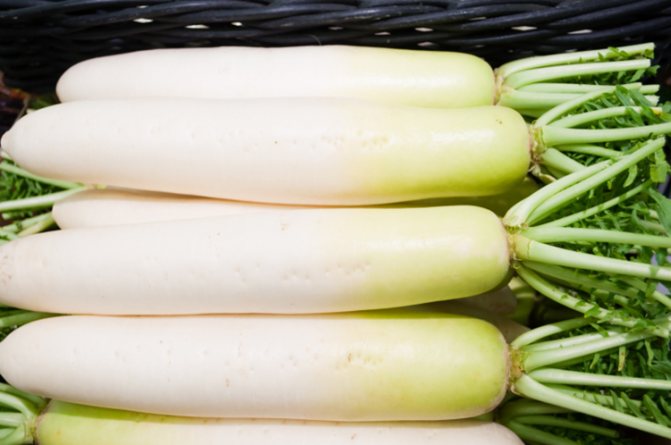

Daikon care rules
Growing a Daikon on your site is not difficult.But in order to get a rich, high-quality harvest, you must adhere to a number of rules.
Watering
Daikon needs systematic abundant watering. During the growing season of the crop, the soil should be constantly in a slightly moist state. If the seeds were applied directly to open ground, then the first watering is carried out as soon as sprouts appear. If the plant lacks moisture, then the bushes will "go to the arrow", and the formed roots will become tough, fibrous, not juicy. On average, it is recommended to water the bushes once every 4-5 days. In dry seasons, the frequency of irrigation increases, in rainy seasons, it decreases.
Hilling
As the Daikon bushes grow, part of the root crop (sometimes a third of the fruit) begins to peek out of the soil. In this case, the bushes should be earthed up, the bare roots should be sprinkled with earth.
Pests and diseases threatening Daikon
Under unfavorable conditions, not proper care, the plant's immunity to diseases and pests decreases.
Daikon is affected by all of the same diseases as other cruciferous crops. These are mucous bacteriosis, black leg, keela, mosaic, felt disease, vascular bacteriosis.
Of the pests, the danger to Daikon is the cruciferous flea. Also, the plant can be attacked by the garden scoop, sprout and spring cabbage fly, rape bug and flower beetle, slugs, cabbage bug, aphids and moths.
Treatment of Disease and Pest-affected Daikon
To protect Daikon bushes from fungal diseases, all preventive measures should be taken. But if they are already affected, then it is necessary to treat the entire bed with a solution of the biological product "Planriz" or "Binoram", in accordance with the instructions attached to the drug.
To eradicate pests, the Daikon bed is treated with an insecticide solution designed to combat a specific pest that has settled in the plant.
Experienced gardeners recommend, for preventive purposes, planting marigolds next to the garden bed on which Daikon is grown, thereby combining benefits and beauty.
Growing and care
When to sow
Sowing daikon is possible in early spring or in summer (end of July). This plant loves short days. Shows up very quickly, after about a week. If sown early (in early July), when the day is still long, then young plantings immediately emit flower stalks.
For this reason, adhere to the usual rule - hurry with sowing in the spring, and do not rush in the summer. Like all radishes, daikon does not like dense crops and also begins to bloom.
Land preparation
In order for attractive, smooth roots to grow, it is necessary to perfectly cultivate the soil. It must be light, fertile, seasoned with perfectly rotted manure or fertilizer.
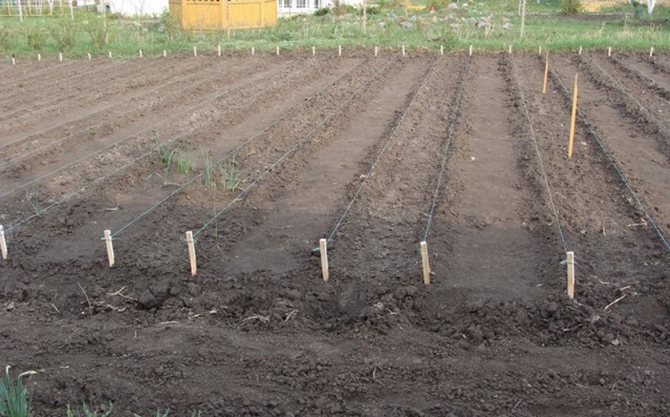

Daikon's roots are large, the gap between the rows is 40 cm, and between the seeds is 30 cm. Use a peg to mark the slots 4–5 cm deep and place a seed in them, they are large in the daikon. When sowing in spring, there should not be enough moisture in the ground; But summer crops must be provided with excellent moisture for germinating seeds. Spill specialized holes and sprinkle the seeds with wet soil and mulch on top of the planting with humus or peat 3 cm.When the plantings appear, add mulch after watering (dry grass, weeds, hay). Like all radishes, the daikon loves water.
Sowing seeds
Planting daikon seeds can be carried out immediately in open ground, or in containers (pots, containers) for seedlings. In the climate of the middle zone, the 1st method is more often used, since the daikon is an early ripening plant, and during summer planting it ripens quite ripe before the cold weather arrives, in addition, sowing the daikon immediately into the open ground is easier.With any method, the seeding technology is practically the same.
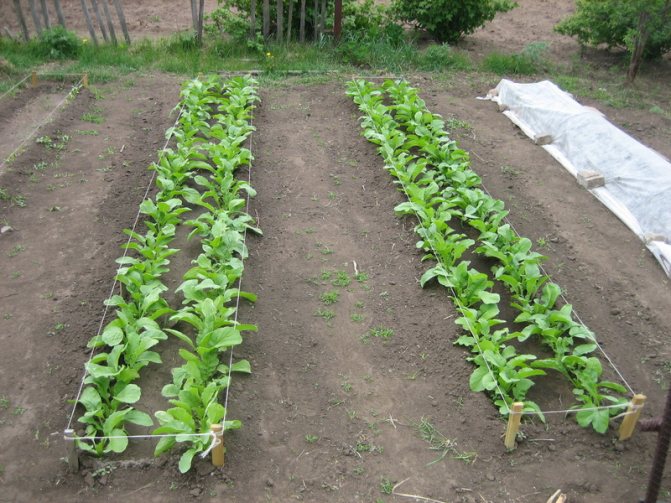

In order for the seedlings to emerge as quickly as possible, the seeds must be prepared. There are a couple of elementary methods for this:
- The first method consists in easy stratification - the seeds are placed in perfectly heated water (50 ° C) for 30 minutes, then they are rapidly cooled in ice water, and after that they are placed in a refrigerator in the lower compartment for 24 hours;
- 2nd method - the seeds are covered with warm (about 40 ° C) water for 24 hours, after which they are slightly dried;
- 3rd method - the seeds are placed in a perfectly wet cloth or gauze, and placed in a warm place for 24 hours.
Soaking grains is only the ability to hasten their germination from the ground, not an indispensable technology. Some vegetable growers sow daikon with dry seeds in open ground or pots, but in this option, the land must be thoroughly watered, and then keep the standard dampness until sprouts appear.
Collecting root vegetables
Depending on the variety, the crop can be harvested in 40-70 days. Ripe root crops should not be stored for a long time in the ground, from this they will not be tasty, tough.
Harvesting is necessary on a dry, sunny day. If the ground is soft, loose, then the bushes are easily pulled out of the ground, you just have to pull them by the tops. If the soil is heavy, then dig the Daikon with a pitchfork or a shovel.
The roots extracted from the soil are laid out along the garden bed, dried, then the earth is removed from the fruits, the tops are cut off.
Harvesting and storage
The daikon is removed for storage, planting and care of which was carried out in central Russia - in October. The fruits dug out too early are poorly stored, and delaying harvesting can lead to freezing of the daikon during the first frost. Harvesting is carried out in dry weather.
On heavy soils, the fruits are first poured in with a shovel or pitchfork to eliminate the possibility of breaking. From loose soil, the daikon can simply be pulled out by the tops.
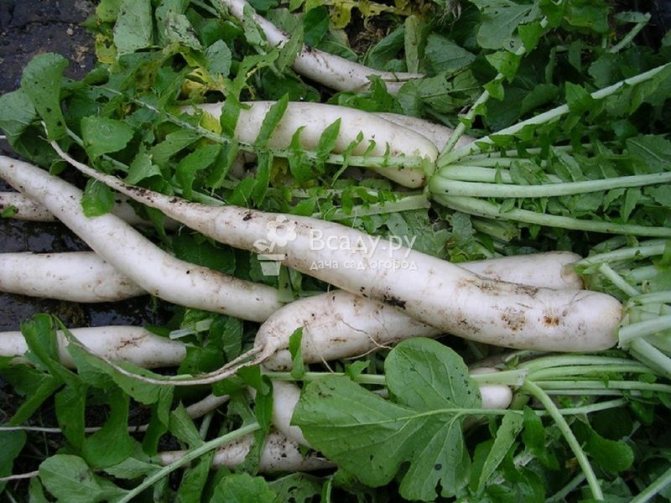

Harvesting daikon for storage
The dug vegetables are laid out on the garden bed so that the remnants of the earth on it dry out and can be easily cleaned off. The leaves are cut with a knife, and the roots are stored.
The daikon is stored in a basement or refrigerator at temperatures from 0 to plus 5 degrees Celsius. To prevent the fruits from withering, they are placed in a plastic bag or sprinkled with sand.

